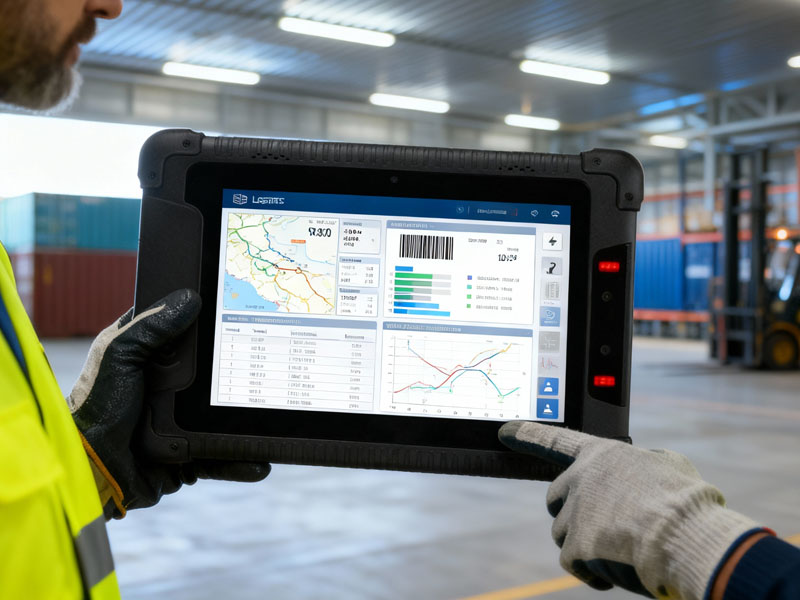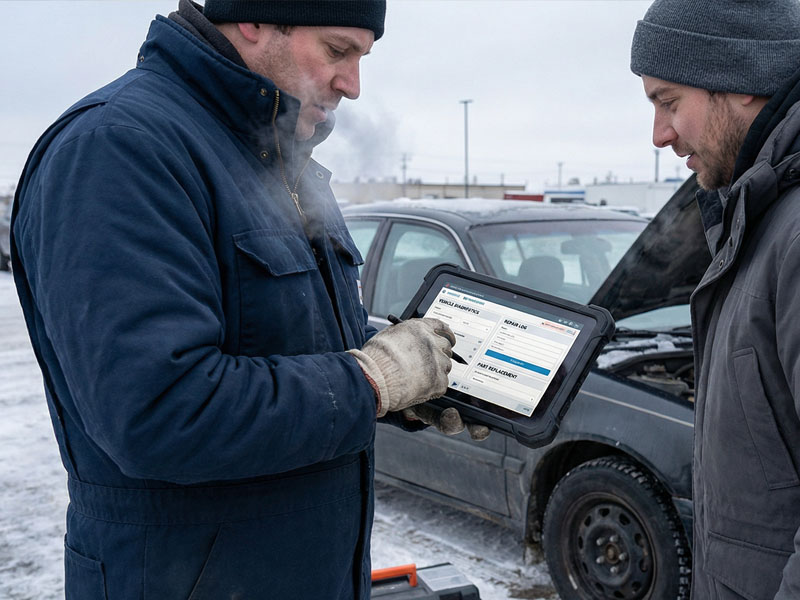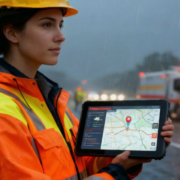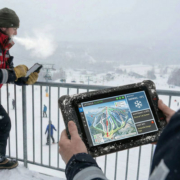What is the Difference Between a Rugged Tablet and a Tablet?
When choosing between a rugged tablet and a regular tablet, the decision often comes down to durability, performance, and the environments in which you plan to use the device. Understanding the key differences can help you make an informed choice, especially when it comes to demanding tasks in challenging environments. In this article, we’ll explore the differences between rugged tablets and standard tablets, and highlight some of Portworld’s rugged tablet offerings that are designed for industrial and field use.
1. Durability
Regular Tablets:
Standard tablets, such as the Apple iPad or Samsung Galaxy Tab, are designed for everyday use in home or office environments. While they may be equipped with features like high-resolution screens and ample storage, they lack the durability needed for extreme conditions. These devices may not survive accidental drops, water splashes, or exposure to dust and debris.
Rugged Tablets:
Rugged tablets are designed to withstand harsh environments. These devices are built to handle tough conditions, such as extreme temperatures, dust, water, and shocks. They typically have reinforced frames, specialized seals, and impact-resistant screens.
For example, Portworld’s YC-1801B, a rugged industrial-grade 8-inch tablet, is IP65-rated for water and dust resistance and complies with MIL-STD-810G standards for drop resistance. This tablet is designed for industries like logistics, law enforcement, and remote operations, where durability is crucial.

Android Rugged Tablet
2. Performance
Regular Tablets:
Standard tablets are typically powered by processors that are optimized for general consumer use, such as browsing, streaming, and light gaming. These tablets offer adequate performance for everyday tasks but may struggle with heavy-duty applications or multitasking.
Rugged Tablets:
Rugged tablets like Portworld’s YC-1804 are equipped with high-performance processors designed to handle demanding applications while remaining highly durable. The YC-1804, for instance, is powered by the UNISOC T616 SoC, featuring a dual-core A75 processor and six-core A55 CPU, making it capable of running complex software and multitasking efficiently in field environments. These rugged tablets also come with larger batteries for extended use, crucial for long work shifts in industrial settings.
3. Display
Regular Tablets:
Most standard tablets come with high-resolution displays that are designed for indoor use. These screens are bright and vibrant, but they may not perform well under direct sunlight or in outdoor settings where glare and reflections can be an issue.
Rugged Tablets:
Rugged tablets are built with sunlight-readable displays that are engineered for use in outdoor conditions. For instance, the Portworld YC-1802Q offers a 10.1-inch high-brightness touchscreen that provides clear visibility in direct sunlight, making it ideal for field work, construction sites, or any job that requires working outdoors.
4. Battery Life
Regular Tablets:
Standard tablets typically offer 8-10 hours of battery life, depending on usage. This is usually sufficient for casual, everyday use but may not be enough for users who need their tablet for long hours on the job.
Rugged Tablets:
Rugged tablets are designed with long-lasting batteries to handle extended workdays in the field. The Portworld YC-1804, for example, features a 10,000mAh battery that supports 8–14 hours of continuous use. This long battery life ensures that users can rely on their tablet without needing frequent recharging, even in remote areas with limited access to power sources.
5. Applications and Use Cases
Regular Tablets:
Standard tablets are great for personal use, such as browsing, watching videos, and social media. They’re also commonly used in educational settings or for light business applications.
Rugged Tablets:
Rugged tablets are specifically designed for industrial and commercial use. They are equipped to handle extreme conditions, which makes them ideal for applications in industries such as construction, logistics, healthcare, field services, and government. The Portworld YC-1801B and YC-1802Q are examples of rugged tablets that are tailored for demanding environments, offering features such as built-in barcode scanners, GPS, and multiple connectivity options for fieldwork.

Android rugged tablet
6. Price
Regular Tablets:
Regular tablets are generally more affordable, with prices ranging from budget-friendly options to premium devices. These tablets are designed for consumers and offer great value for everyday use.
Rugged Tablets:
Rugged tablets tend to be more expensive due to their enhanced durability and industrial-grade features. However, the investment is often worth it for businesses that need reliable devices in challenging environments. The Portworld YC-1802Q, for example, offers a rugged design, advanced connectivity features, and long battery life, making it an essential tool for professionals working in industries like logistics, law enforcement, and industrial automation.
Which One is Right for You?
If you’re simply looking for a tablet for personal use, a standard tablet will likely suit your needs just fine. However, if your work involves harsh conditions, frequent travel, or outdoor use, a rugged tablet is the clear choice. Portworld’s rugged tablet range, including models like the YC-1801B, YC-1802Q, and YC-1804, offers devices built to withstand the toughest conditions while delivering high performance and long-lasting battery life.






